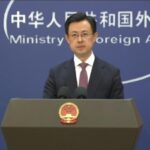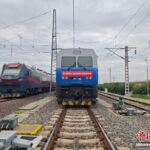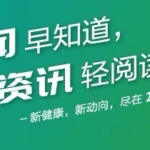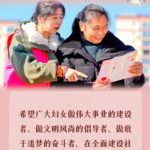Beijing, August 20 – The State Council Information Office of China held a press conference on August 20 regarding the preparations for the military parade. The deputy director of the parade leadership group office and deputy director of the Operations Bureau of the Central Military Commission’s Joint Staff Department, Major General Wu Zeke, stated at the conference that the proportion of new-domain and new-quality forces in this parade has increased.
The Central Committee of the Communist Party of China and the Central Military Commission have decided to hold a grand military parade in Tiananmen Square in the capital on September 3 this year. Xi Jinping, General Secretary of the Central Committee of the Communist Party of China, President of the State, and Chairman of the Central Military Commission, will review the troops.
Wu Zeke indicated that the design of this parade highlights three aspects.
First, the structure of military forces has become more complete. Shortly before this year’s Army Day on August 1, the Chinese military unveiled new military flags for various branches. Military flags are the combat banners of the People’s Liberation Army and serve as its symbol. The improvement of the military flag system signifies the enhancement of the military force structure. In this parade, the reviewed formations will carry their respective military flags and the flag of the Armed Police Force, representing a comprehensive display of the Chinese military’s strength.
Second, the proportion of new-domain and new-quality forces has increased. In addition to the four strategic branch formations in the foot formations, which themselves represent new-domain and new-quality forces, the equipment formations specifically include groups such as unmanned, underwater, and cyber-electronic warfare units as part of the new operational capabilities.
Third, the armed forces system is more comprehensive. It includes not only the active forces of the People’s Liberation Army but also armed forces such as the Armed Police, reserve forces, and militia, forming a “three-in-one” armed forces system with Chinese military characteristics.
Xu Guizhong, the executive deputy director of the office of the parade command organization of the Central Theater Command of the People’s Liberation Army and deputy director of the Political Work Department with the rank of major general, explained that this parade involves a wide variety of equipment types and new technical systems, with most units being mixed formations, making equipment management and support challenging. Practical measures have been taken, such as assembling experts and technical backbone personnel from different fields according to combat requirements to build a flat and efficient support system, extending joint support to the tactical level.
In terms of support models, relying on existing equipment technical specifications and standard operating procedures, a single-equipment responsibility mechanism has been established, implementing card-based and checklist-style maintenance to achieve engineering and standardization in equipment management and support.
In terms of support methods, utilizing an intelligent equipment management information system, information is dynamically collected, data analyzed, and situations generated. Equipment health monitoring is conducted throughout the entire process, with targeted preventive maintenance carried out, significantly improving equipment support efficiency and reliability.





